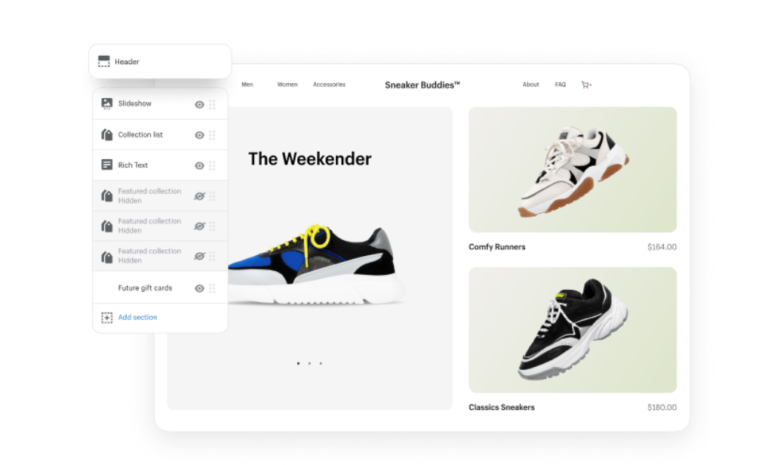Starting your own Shopify store is an exciting venture that can potentially lead to a successful e-commerce business. With the right approach and dedication, you can build a thriving online store that caters to your target audience. In this article, we will guide you through the steps to start your own Shopify store.
**1. ** Understanding Shopify
Before diving into the process of creating your Shopify store, it’s crucial to have a basic understanding of what Shopify is. Shopify is an e-commerce platform that allows you to set up and manage an online store. It provides various tools and features to help you sell products and reach your customers. To get started, visit the Shopify website and sign up for an account.
**2. ** Choosing a Niche
One of the most important decisions when starting an online store is selecting a niche or industry to focus on. Your niche should align with your interests and expertise, as this will make it easier to create and curate products, write compelling content, and connect with your target audience. Research the market and identify trends to ensure there is demand for your chosen niche.
**3. ** Market Research
Once you’ve chosen your niche, conduct thorough market research to understand your competition and target audience. Identify your competitors’ strengths and weaknesses, and look for opportunities to differentiate your store. Define your target audience’s demographics, preferences, and pain points to tailor your offerings and marketing strategies accordingly.
**4. ** Choosing Products
Selecting the right products to sell is a critical step in the process. Consider whether you want to sell physical products, digital goods, or a combination of both. You can either create your products or source them from suppliers, wholesalers, or dropshipping companies. Ensure that the products you choose align with your niche and have the potential for profitability.
**5. ** Setting Up Your Store
Now that you have a clear vision of your niche and products, it’s time to set up your Shopify store:
- Choose a Domain Name: Select a domain name that reflects your brand and is easy to remember. Shopify offers domain registration services if you don’t already have one.
- Select a Theme: Shopify provides a variety of customizable themes for your store’s design. Choose one that suits your brand and products, and make necessary customizations.
- Add Products: Upload your products to your store, complete with detailed descriptions, high-quality images, and pricing information.
- Set Up Payment and Shipping: Configure your payment gateway to accept payments from customers. Set up shipping options and rates based on your products’ size, weight, and destination.
- Configure Taxes: Depending on your location and the locations you ship to, configure tax settings to comply with local regulations.
**6. ** Design and Branding
Your store’s design and branding play a significant role in attracting and retaining customers. Ensure that your store’s visual elements, such as colors, logos, and fonts, align with your niche and target audience. A consistent and visually appealing brand will make your store more memorable.
**7. ** Content Creation
Create high-quality content to engage and inform your audience. Write product descriptions that highlight the benefits and features of your products. Start a blog or create educational content related to your niche to establish yourself as an authority in your field and drive organic traffic to your store.
**8. ** Marketing and Promotion
To drive traffic and sales, you’ll need to implement marketing strategies:
- Social Media: Utilize platforms like Instagram, Facebook, and Twitter to connect with your audience, share content, and run targeted ads.
- Email Marketing: Build an email list and send regular newsletters, promotions, and updates to your subscribers.
- Search Engine Optimization (SEO): Optimize your store’s content for search engines to improve its visibility in search results.
- Paid Advertising: Consider using platforms like Google Ads or Facebook Ads to reach a wider audience and drive traffic to your store.
- Influencer Marketing: Partner with influencers in your niche to promote your products to their followers.
**9. ** Customer Support
Offer excellent customer support to build trust and retain customers. Provide clear contact information, respond to inquiries promptly, and address any issues or concerns professionally. Happy customers are more likely to become repeat buyers and refer others to your store.
**10. ** Monitor and Adapt
Regularly analyze your store’s performance using Shopify’s analytics tools. Track key metrics such as traffic, conversion rates, and sales. Use this data to make informed decisions, refine your marketing strategies, and continuously improve your store’s performance.
Starting your own Shopify store is a rewarding journey that requires dedication, creativity, and adaptability. By following these steps and staying committed to your goals, you can build a successful online business that generates income and provides value to your customers. Good luck with your Shopify venture!











+ There are no comments
Add yours